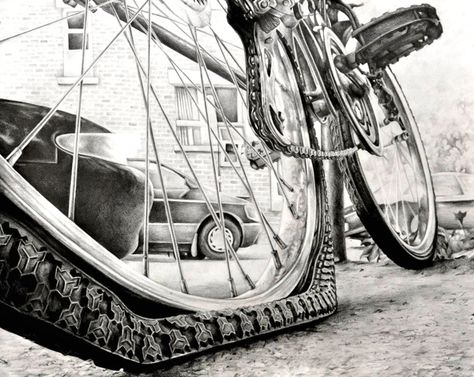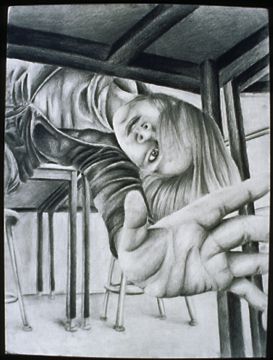Foreshortening and forced perspective
Supplies:
A picture of someone or something with forced perspective
Pencils or charcoal
white color pencil
grey toned paper
A picture of someone or something with forced perspective
Pencils or charcoal
white color pencil
grey toned paper
Drawings taken form State Vase TAEA website
You may chose to do this in charcoal or pencil. You may grid (drawing 3/4 needs to do a four square grid) but I encourage you to draw from observation, measuring and checking negative space.
Essential question: What is foreshortening? How does this affect my drawing style?
How will we know if they’ve learned it?
Students will have a finished piece of art that can be considered for various competitions
What will we do if they don’t learn it?
Students will be re-taught and can utilized videos to re-work missing elements of their assignment.
What will we do if they have / have already learned?
Students can always go above and beyond the instructions to create a more challenging experience.
My students understand and can… by the end of the lesson
Have a finished painting/drawing of a figure or object demonstrating extreme foreshortening and forced perspective.
Teks: 117.C ((2) Creative expression. The student communicates ideas through original artwork using a variety of media with appropriate skills. The student expresses thoughts and ideas creatively while challenging the imagination, fostering reflective thinking, and developing disciplined effort and progressive problem-solving skills. The student is expected to: (A) use visual solutions to create original artwork by problem solving through direct observation, original sources, experiences, narrations, and imagination; (B) communicate a variety of applications for design solutions; (C) use an understanding of copyright and public domain to appropriate imagery constituting the main focal point of original artwork when working from images rather than direct observation or imagination; (D) create original artwork to communicate thoughts, feelings, ideas, or impressions;
use an understanding of copyright and public domain to appropriate imagery constituting the main focal point of original artwork when working from images rather than direct observation or imagination;
How will we know if they’ve learned it?
Students will have a finished piece of art that can be considered for various competitions
What will we do if they don’t learn it?
Students will be re-taught and can utilized videos to re-work missing elements of their assignment.
What will we do if they have / have already learned?
Students can always go above and beyond the instructions to create a more challenging experience.
My students understand and can… by the end of the lesson
Have a finished painting/drawing of a figure or object demonstrating extreme foreshortening and forced perspective.
Teks: 117.C ((2) Creative expression. The student communicates ideas through original artwork using a variety of media with appropriate skills. The student expresses thoughts and ideas creatively while challenging the imagination, fostering reflective thinking, and developing disciplined effort and progressive problem-solving skills. The student is expected to: (A) use visual solutions to create original artwork by problem solving through direct observation, original sources, experiences, narrations, and imagination; (B) communicate a variety of applications for design solutions; (C) use an understanding of copyright and public domain to appropriate imagery constituting the main focal point of original artwork when working from images rather than direct observation or imagination; (D) create original artwork to communicate thoughts, feelings, ideas, or impressions;
use an understanding of copyright and public domain to appropriate imagery constituting the main focal point of original artwork when working from images rather than direct observation or imagination;





